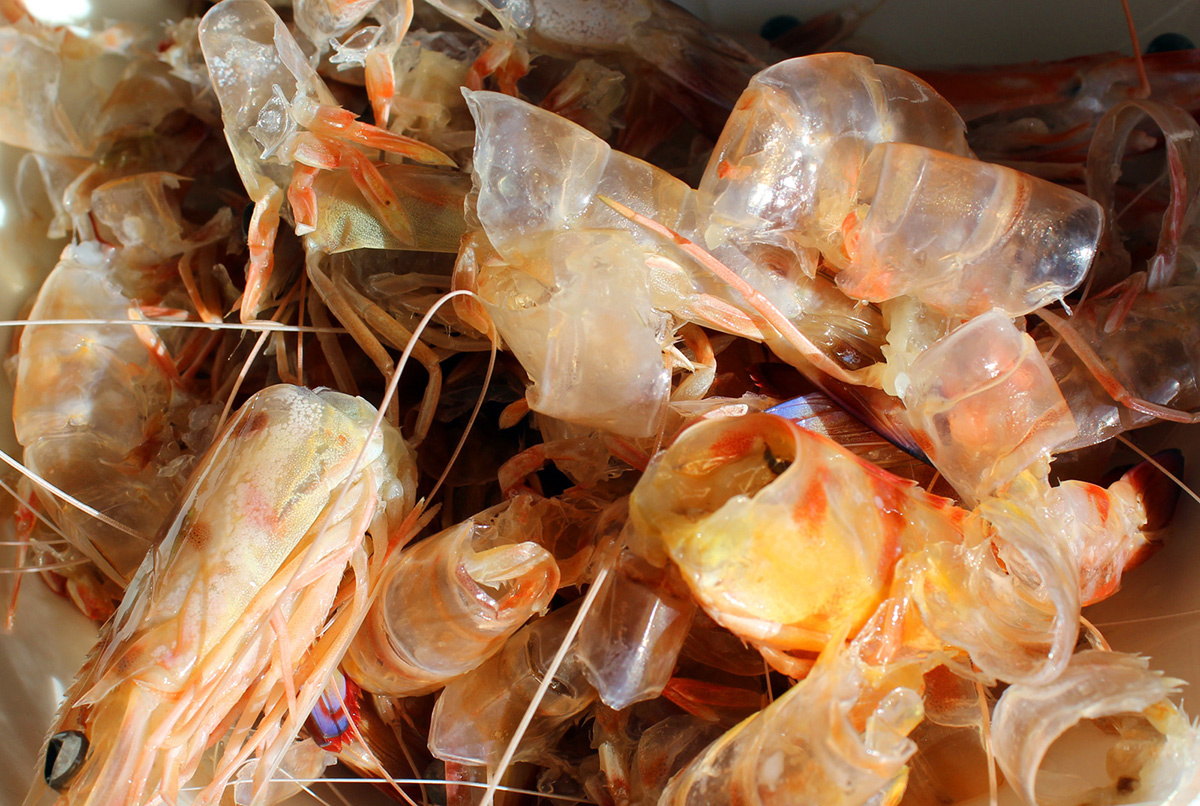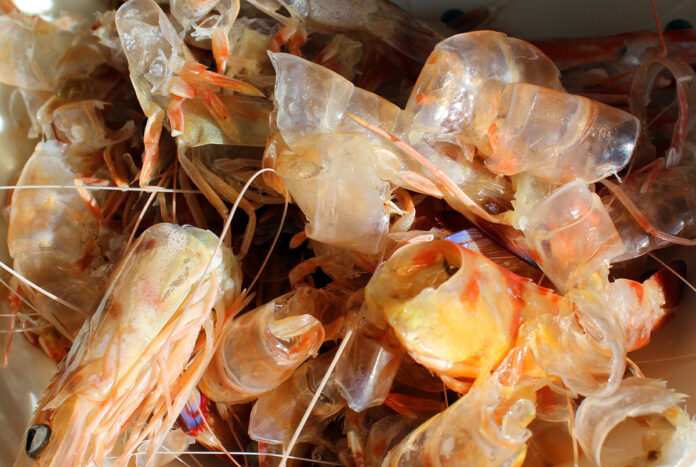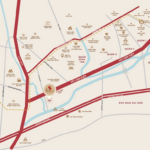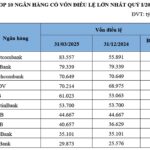Untapped treasure trove of raw materials
Vietnam is among the top 5 shrimp-producing countries globally, exporting products to over 100 markets with a turnover of approximately $3.9 billion in 2024. Alongside the economic value of shrimp meat, there is a massive amount of by-products, including heads and shells, that are either wasted or manually processed, leading to both economic loss and environmental strain.
It is estimated that the head and shell account for about 35–50% of a shrimp’s weight. With Vietnam’s significant shrimp export volume, the country generated roughly 325,000 tons of shrimp by-products in 2019, and this figure is projected to reach 450,000 tons by 2025.
Shrimp by-products are a rich source of chitin, a valuable biological compound. Chitin from shrimp heads and shells can be extracted to produce chitosan, a compound capable of forming thin films and binding with water, fats, metal ions, and exhibiting high antibacterial properties. Chitosan finds applications in pharmaceuticals, cosmetics, nutraceuticals, and industrial processes.
However, currently, most shrimp by-products are discarded or merely utilized as fresh fertilizer or animal feed, with only 20–30% being processed industrially.

Shrimp heads and shells hold significant value when chitosan is extracted (illustrative image)
Chitosan – Valued several times higher than processed shrimp
Each kilogram of processed shrimp yields around $20, whereas pure chitosan extracted from shrimp by-products can fetch up to $500 per kilogram – 25 times the value of the primary product (as of 2024 information).
In medicine, chitosan is also used to support obesity treatment, wound healing, and the production of glucosamine, a compound that aids in joint health. This is why countries like Japan and the US are highly interested in seafood by-products.
Challenges in processing shrimp by-products
Despite their high value, by-products have not garnered sufficient attention from large domestic enterprises. According to the Saigon Times, 70% of shrimp by-products are used in animal husbandry, and only a small portion is processed for food and pharmaceuticals. The total value of by-products is currently around VND 4 trillion per year, while the potential could reach over VND 25 trillion (equivalent to $1 billion) if utilized efficiently.
Pioneering companies like Vietnam Food Joint Stock Company (VNF) have recognized the opportunity in these seemingly worthless by-products. Since 2015, VNF has collaborated with scientists from Nha Trang University to research and extract bioactive compounds from shrimp heads and shells. However, the current by-product industry is rudimentary and lacks scientific application, mainly involving steaming, drying, and grinding processes. Meanwhile, shrimp by-products contain valuable nutrients that can be used to produce high-value products such as Omega-3, Collagen, and Glucosamine.
According to a VNF leader, the company is creating valuable products from shrimp by-products, such as organic fertilizers that reduce emissions, input materials for animal husbandry and aquaculture, and even nutraceuticals. If not utilized, hundreds of thousands of tons of by-products annually will become an environmental burden.
Environmental challenges and technological requirements
Chitosan extraction is not a simple process. It requires the use of acids for neutralization and chemical treatment, and improper handling can lead to environmental pollution. Therefore, extracting chitosan from shrimp by-products demands a well-established processing technology; otherwise, it may result in a ‘gain one, lose ten’ scenario.
According to the General Statistics Office, in 2020, Vietnam generated over 150 million tons of agricultural by-products, with the shrimp industry contributing significantly. Without proper planning, technological investments, and policies encouraging businesses to participate, this precious resource will continue to be wasted and even cause harm instead of creating value.






































